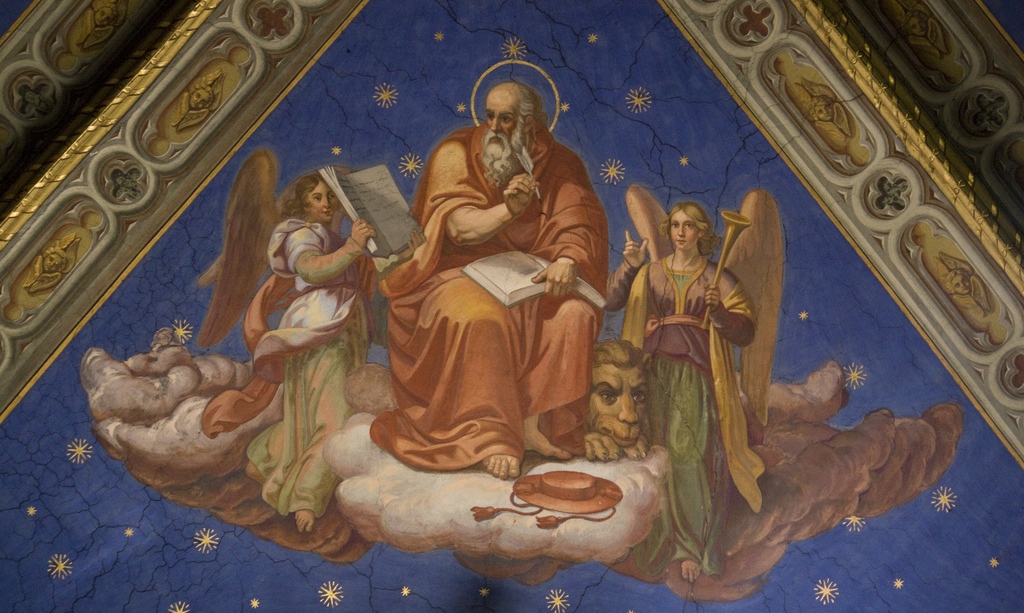1600 years after his death, St. Jerome is remembered, fondly, for his Vulgate—a corrected Latin translation of the Scriptures. This endeavor certainly stands tall among the accomplishments of Western literature, and his critics, such as they were in the fifth century, have largely been forgotten.
But that’s just it. Looking back in hindsight, trials always loom less largely than successes. But St. Jerome does not shrink from pointing out either. In fact, he occasionally reads so curmudgeonly that, if we were to take him seriously, we would be disabused of any pietistic, romantic understanding of the spiritual life. For example, the hagiographies depict Jerome as mastering Hebrew, driven (as he was) by the ardent desire to read the Scriptures and to conquer his own passions by conquering this language. This is true on all counts, but his personal account of the effort is more prosaic (and sarcastic):
Thus, after familiarizing myself with the pointed style of Quintilian, the fluency of Cicero, the seriousness of Fronto, and the gentleness of Pliny, I now began to learn the alphabet and practice hissing and breath-demanding words.
For many cultured citizens of the Roman Empire, the style of Hebrew verse looked plain in comparison to the writers of Greece and Rome. No less than St. Augustine admits to being tempted to look down upon the literary quality of the Bible, as he notes in his Confessions. The doggerel translations made before Jerome’s time often exacerbated this problem.
And yet, some found St. Jerome’s revisions grating to the ear: most of the surviving copies of St. Jerome’s work are peppered generously with phrasings found in the earlier translations. The Western Church, in large part, was attached to the older phrasing, which it only abandoned hundreds of years after St. Jerome’s time.
In one famous example, St. Jerome had retranslated the plant that provided the prophet Jonah with shade (Jonah 4:6), changing it from gourd to ivy. Now, the Hebrew word in the text means neither: it refers instead to a plant unique to the Ancient Near East. However, Jerome opted to make the switch on the basis of the Greek translation of the text, which records ivy. There was absolutely no textual support for gourd.
But, like the ancient Israelites before them, Latin Christians were still attached to their gourds. The faithful in one North African diocese complained about the new translation and forcibly changed it back, garnering support even from St. Augustine. Jerome’s rival Rufinus, a former friend, taunted Jerome, asking whether he would have the Church chisel out such gourds from the mausoleums that traditionally sported them on account of the old verse, and replace them with ivy.
This raises a question: should St. Jerome be considered an iconoclast?
In a sense, yes. He was ready to confront not only the inarticulate translations and the corrupted texts, but (even worse) the spiritual stuck-in-the mud mentality of his brethren in Christ–an effort far more perilous than any cemetery renovation. Some Christians were so stubborn in their adherence to the old translations that they (like the condemned Marcion before them) were prepared to denounce the original Hebrew texts wholesale, accusing the Jews of forgery rather than question the accuracy of the Latin and Greek translations. Jerome was content to question them, but only at the request of Pope St. Damasus, the Church’s supreme pastor. Since St. Jerome respected earlier translations (without blindly adopting them), he was seeking continuity with his contemporaries, while sharply goading them to return to the sources that better transmitted the Word of God. Rather than obliterating the opposition, St. Jerome sought merely to excise those elements that had no business being there.
But his urge for reform settled most totally, and most vociferously, upon a most proper target: himself. It is said that centuries after Pope Damasus, one of his successors caught sight of an icon of St. Jerome depicted as holding a stone, symbolizing the extreme penances he imposed on himself on account of his temper (and other vices). The Pope exclaimed, “You do well to carry that stone, for without it the Church would never have canonized you.”
Perhaps St. Jerome’s most bracing penance was his willingness to engage with those who caused him consternation, some (like St. Augustine) who would be housed in niches next to his in churches the world over.
If we allowed such saints to step out of these niches, it’s quite possible that the apparently smooth figures would once again display their sharp edges. Turning away from sin and being conformed to Christ are not for the timid, aloof soul. Besides all the other accomplishments of the saints, it is that mastery of self that stands above all else, even the mastery of breath-demanding words.
✠
Image: Fr. Lawrence Lew, O.P., St Jerome (used with permission)







